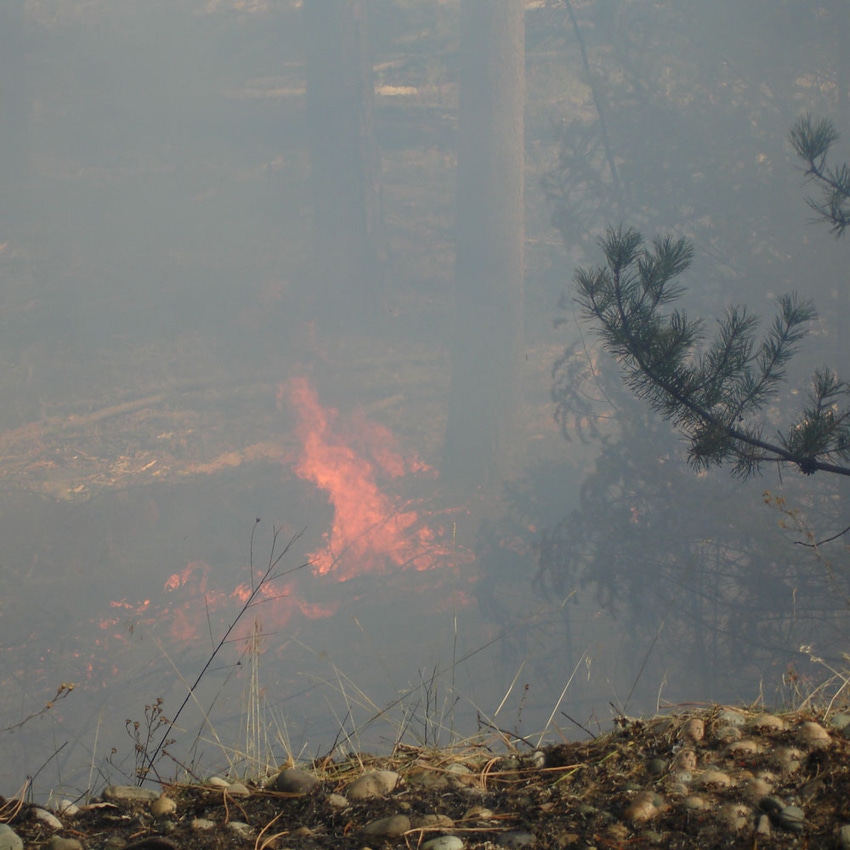Forests in western U.S., southeastern Australia, Europe and eastern Mediterranean region among areas at highest risk.
April 6, 2017

When it comes to large, high-intensity forest fires, South Dakota State University professor Mark Cochrane, a senior scientist at the Geospatial Sciences Center of Excellence, said to expect a lot more in the coming years.
Using satellite data from 2002 to 2013, Cochrane and researchers from the University of Tasmania in Australia and the University of Idaho examined nearly 23,000 fires worldwide, identifying 478 large, high-intensity fires that they defined as extreme wildfire events. Their work was described in the February issue of Nature Ecology & Evolution.
“Almost all (of the fires) happened under bad conditions: high temperatures, dry conditions and strong winds, which tell us that weather and climate are very important,” Cochrane said.
Using monthly world weather data from 2000 to 2014, the researchers modeled the likely changes in fire behavior from 2041 to 2070 and are predicting a 20-50% increase in the number of days that conditions will be conducive to fires.
“Those conditions are based on business-as-usual carbon emissions,” Cochrane said. “This will continue to worsen after 2070 unless we get very serious about cutting global carbon emissions.”
By 2041, there will likely be 35% more of these large, catastrophic fires per decade, according to Cochrane. “That translates to four extreme fire events for every three that occur now,” he added.
However, that risk is not spread evenly, Cochrane explained. Forests in the western U.S., southeastern Australia, Europe and the eastern Mediterranean region that extends from Greece to Lebanon and Syria are among those areas at highest risk.
Defining extreme fire events. Although the concept of huge, devastating wildfires, sometimes called megafires, has been tossed around, Cochrane said, “There is no operational definition.” Therefore, the research team, led by University of Tasmania professor David Bowman, examined fire intensity and area.
First, the researchers identified hot spots using moderate resolution imaging spectroradiometer from two Earth imaging satellites to measure the amount of heat energy released, known as fire radiative power. To do this, they looked at the total energy being released in each 25,000-acre block across the planet. Cochrane explained, “It’s a combination of the area that is burning and the intensity at which it is burning.”
Through that analysis, the researchers identified 478 extreme fire events. “We limited ourselves to the top 0.003%,” he said. “Anyone would agree that these are pretty intense, large events.”
Determining impact on humans. The team further narrowed the extreme fire events to ones that had the greatest impact on people.
“Fires in the boreal forest might be very large, but they do not impact many people,” Cochrane pointed out. “We looked for those in which people had to clear out of the way.”
The researchers identified 144 fires that were catastrophic, meaning people died and homes were destroyed. “Most of these fires were in the western U.S. and southeastern Australia, which have fairly high population densities,” Cochrane said.
Wind-driven fires accounted for nearly 35% of these catastrophic events, while severe drought was a factor in nearly 22%. Other extreme fire weather conditions, which were largely due to high temperatures and low humidity, accounted for slightly more than 20% of these costly fires.
“Not only is climate making things worse, but people are building homes in these flammable landscapes,” he said.
You May Also Like
.png?width=300&auto=webp&quality=80&disable=upscale)


